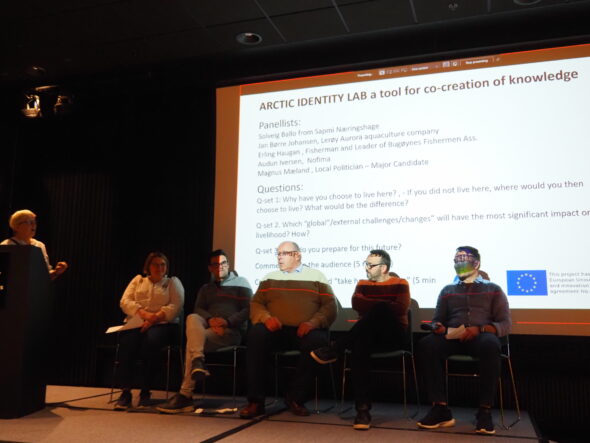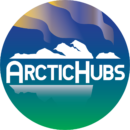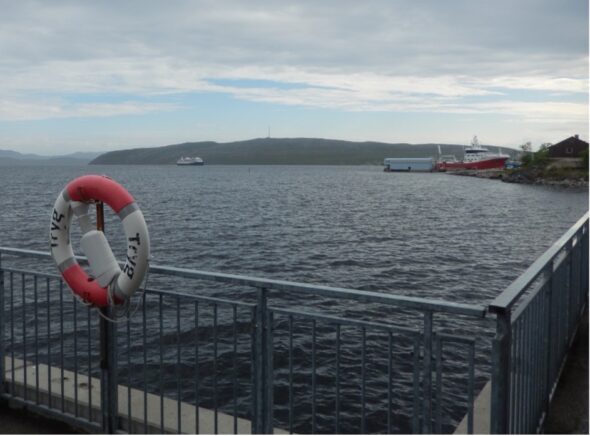
The Varangerfjord hub, adjacent to the Norway-Russia-Finland tri-border, at first glance may appear as a remote and unassuming region on the fringes of the European Arctic. However, the recent seminar coordinated by ArcticHubs partner NOFIMA shed further light on the region’s vibrant ecosystem of adaptation and innovation amidst increasing competition for resources and livelihood spaces across the fjord area. With contributions from ArcticHubs researchers, community stakeholders, local businesses, and entrepreneurs, the seminar explored multiple points of collaboration and contestation. Whilst bringing into focus the need for continuing ways of sharing perspectives, ideas, and utilising different methods to remain resilient on the edge of Europe’s far North.
Insights from Finnmark Stakeholders
A range of stakeholders from the Varangerfjord hub provided valuable insights into some of the local responses to the diverse livelihood and developmental issues experienced throughout the region. For instance, the prominent fisheries sector has faced the introduction of non-indigenous species, such as the King crab (Paralithodes camtschaticus) and Pink salmon (Oncorhynchus gorbuscha), which initially disrupted traditional livelihood practices. However, through collaboration and understanding, the concerns of all parties involved can be better understood. The use of participatory tools and methods, such as Public Participation Geographic Information Systems (PPGIS), Social Licence to Operate (SLO), and exploring future scenarios, enables a stronger opportunity to identify and implement more appropriate strategies. This information has also been used to contribute towards the important coastal plan developed by the four municipalities surrounding Varangerfjord.

Collaboration and Dialogue
The importance of ongoing interaction and dialogue between different actors in the region was most strongly exemplified by the relationship between overlapping aquaculture and other fishing interests. While both operate in the same fjord, reaching common accepted solutions requires long-term exchanges and the utilisation of various platforms or approaches. On-site visits by the ArcticHubs researchers to the different companies and facilities in the Varangerfjord hub highlighted the local, national, and global influences on different business and management practices.
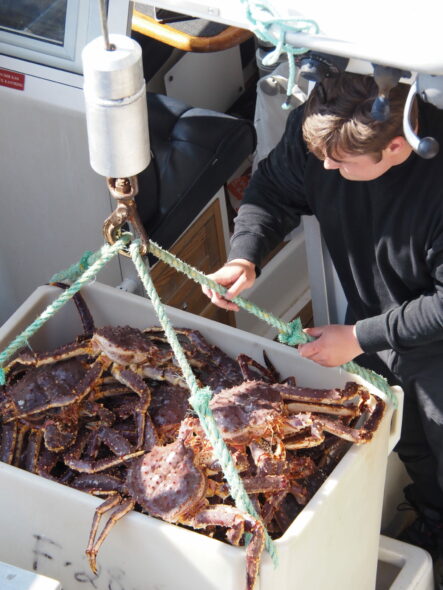
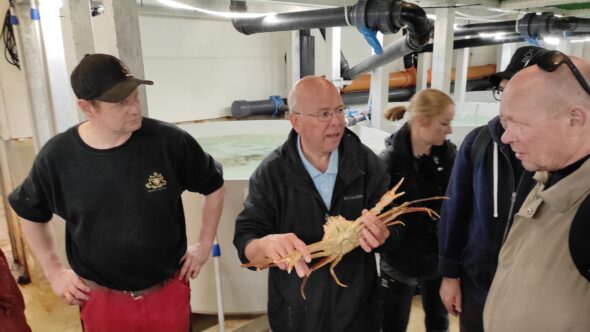
The Russian Connection
The seminar also emphasised the longstanding relationship between the Varangerfjord communities and Russia, particularly the Murmansk oblast. With the border located just 8km away, generations of collaboration have fostered trust and confidence.
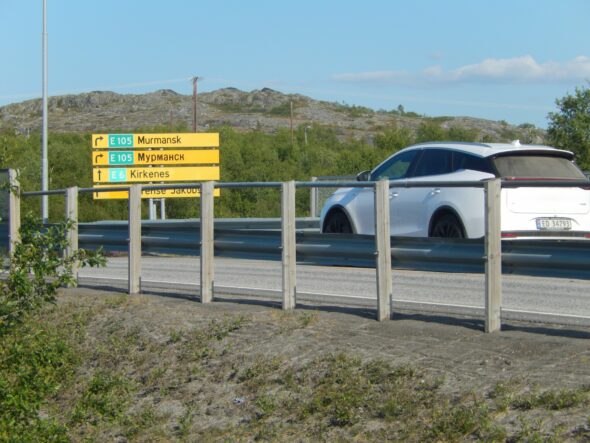 However, recent policy changes and actions in the Kremlin have tested this relationship. As a result, there have been increasing restrictions on movement and notable local job losses. Despite these challenges, the seminar showcased a sense of quiet optimism and determination among participants. Adaptations and innovations in existing livelihoods, such as the successful management and high-end branding of King crab resources, were highlighted. Additionally, alternative business options, like the ICE Kirkenes festival, demonstrated the region’s focus on innovation, community, and entrepreneurship. Housed in a former hospital building, the organisation has placed an emphasis on education, dialogue, and exchange. In this way, the ICE festival outlined how it is working to attract younger individuals to the Varangerfjord region and address the persistent issue of a decreasing and ageing population. This factor remains a challenge that has been observed across many of the other Arctic hubs. Where our researchers have observed the gap that is needing to be bridged between the creation of new jobs, with the long-term settlement and re-invigoration of local communities.
However, recent policy changes and actions in the Kremlin have tested this relationship. As a result, there have been increasing restrictions on movement and notable local job losses. Despite these challenges, the seminar showcased a sense of quiet optimism and determination among participants. Adaptations and innovations in existing livelihoods, such as the successful management and high-end branding of King crab resources, were highlighted. Additionally, alternative business options, like the ICE Kirkenes festival, demonstrated the region’s focus on innovation, community, and entrepreneurship. Housed in a former hospital building, the organisation has placed an emphasis on education, dialogue, and exchange. In this way, the ICE festival outlined how it is working to attract younger individuals to the Varangerfjord region and address the persistent issue of a decreasing and ageing population. This factor remains a challenge that has been observed across many of the other Arctic hubs. Where our researchers have observed the gap that is needing to be bridged between the creation of new jobs, with the long-term settlement and re-invigoration of local communities.
Resilience in the Face of Climate Change
The Varangerfjord hub’s increased visibility, even with potentially negative stories, has firmly put it on the map. A combination of indigenous knowledge, new products, connections with education, technology, and research has resulted in resilient responses and solutions in the face of ongoing climate change. This resilience is crucial for the sustainable coexistence of nature-based industries in the Arctic.
The Arctic hub in Varangerfjord is far from a quiet and isolated place.
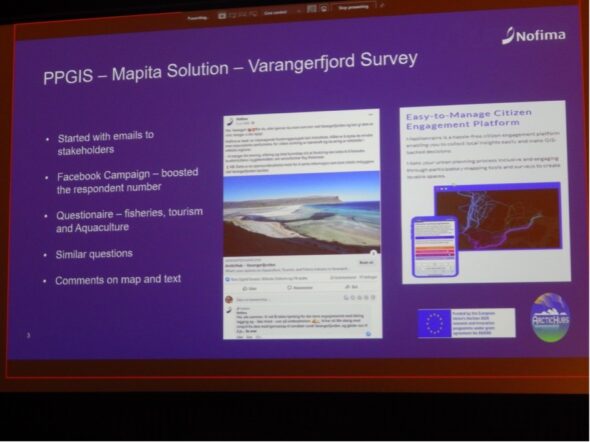
The recent seminar highlighted the region’s dynamic nature, driven by collaboration, innovation, and adaptation. Insights from stakeholders, ongoing dialogue, and the cultivation of relationships with neighbouring regions have contributed to the region’s ability to overcome a growing list of challenges.
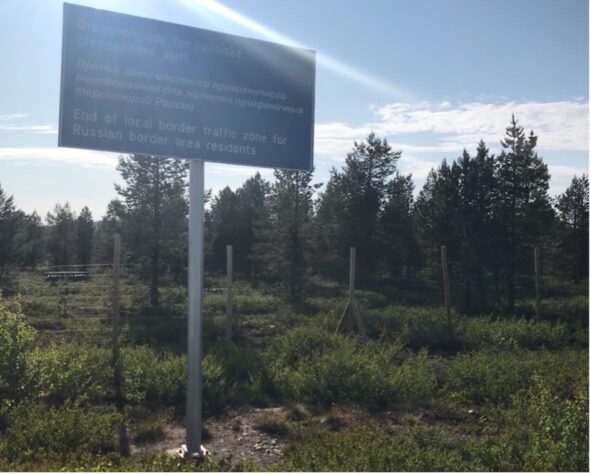
By embracing empirically researched and informed responses the Varangerfjord hub aims to become an example of coexistence between nature-based industries in the Arctic, offering hope for a prosperous and sustainable future in the face of an ever-changing environment.
